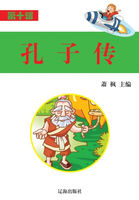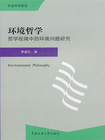01 Animals 认识各种动物
Animals with a backbone are called vertebrates. Animals without backbones are called invertebrates.
Mammals are vertebrates have hair and nearly all of them breathe through their lungs. Female mammals produce their own milk to feed their babies. The blood of mammals stays about the same temperature all the time. Mammals are called warm-blooded animals.
The elephant is the largest land mammal. However, the whale is the largest of all mammals and the shrew is the smallest.
In addition to mammals, you studied about birds, fish, and insects. Birds migrate long distances. The Arctic tern migrates from the Arctic to the Antarctic, a round trip flight of 22,000 miles (35,000) kilometers). Some birds migrate at night, others by day. Some travel alone, others in flocks.
No one knows except the Creator just what instinct is or how it guides birds and animals in such distant trips. We only know that both birds and animals have what is called instinct and use it in ways that we cannot understand.
The instinct and special senses that God has given birds, insects, and animals are wonderful gifts that help to protect them. The bat is a good example. Although this little mammal cannot see very well, it flies by means of a built-in type of “radar.” This built-in system keeps the bat from hitting objects. It also helps it to fly at night when many insects are in the air. The bat needs the insects for food.
The green turtle is another living example of instinct. Instinct guides this reptile long distances through ocean water back to the little island where it was born.
Bees belong to the insect family. Like most insects, bees have three pairs of legs and four wings. The worker bee’s hind legs have an area called “pollen baskets”. These “baskets” carry pollen from the flowers to the hive. Only one queen bee is in a hive, but there may be as many as 75,000 worker bees. A few male bees, called drones, take care of the eggs so they will hatch. The worker bees keep the hive at an even temperature of 95° Fahrenheit (35 degrees Celsius) in order to keep the food supply cool. Bees also send out scouts to locate pollen. When the scouts return, they perform a dance to show the workers which way and how far they should go in order to get pollen.
Man has realized that some species of animals are in danger. He has formed wildlife sanctuaries to protect certain kinds of animals that are in danger of becoming extinct. People are trying to get wildlife to return by providing habitats for the animals. They are leaving some thickets, weed patches, and marshes undisturbed so that wildlife will return. These wildlife refuges may help prevent more animals becoming extinct.
Vocabulary 词汇
backbone ["b?kb?un] n. 脊骨、脊柱、主力、中坚、骨气、毅力
vertebrate ["v?:tibrit] n. 脊椎动物
invertebrate [in"v?:tibr?t] adj. 无脊椎的;
n. 无脊椎动物
Mammal ["m?m?l] n. 哺乳动物
whale [hweil] n. 鲸、鲸鱼
shrew [?ru:] n. 鼩鼱
migrate [mai"ɡreit] vi. 迁移、移往
tern [t?:n] n. 三个一组、燕鸥
instinct ["insti?kt] n. 本能、天性、直觉
bat [b?t] n. 球棒、球拍、击球员、蝙蝠
reptile ["reptail] n. 爬行动物、爬虫
pollen ["p?lin] n. 花粉
hive [haiv] n. 蜂箱、蜂巢、蜂群、喧闹地区
drone [dr?un] n. 雄蜂、不务正业而依赖他人为生者、嗡嗡声;
vi. 发出嗡嗡声
hatch [h?t?] vt. & vi. 孵化、孵出、破壳而出;
vt. 秘密策划;
n. 活板门、舱口
scout [skaut] n. 侦察员(机、舰)、童子军、侦察;
vt. & vi. 寻找、侦察
sanctuary ["s??kt?u?ri] n. 圣所、圣地、庇护所、避难所
extinct [iks"ti?kt] adj. 灭绝的、绝种的、破灭的
patch [p?t?] n. 补丁、补片、眼罩、斑、小片;
vt. 补、修理、解决
marsh [mɑ:?] n. 沼泽、湿地
refuge ["refju:d?] n. 避难(所、处)、庇护
Practice
Write true or false.
1.Bees keep their hives at an even temperature of 110 degrees to protect their food.
2.Drones in a beehive have no work to do.
3.Bees called scouts communicate by means of a dance.
4.Worker bees have a basket on their hind legs to carry pollen from the flowers to the hive.
5.A drone is a male honeybee.
6.A bird refuge is a place where birds can fly to for protection.
7.Some people are becoming interested in keeping animals from becoming extinct.
8.Farmers are draining swamps and marshes to provide a habitat for wildlife.
9.Extinct means no longer existing.
10.A sanctuary is a place that animals should avoid.
11.A habitat is a place where an animal or plant would naturally live.
12. Instinct is a mysterious guiding force within animals which scientists do not fully understand.
译文
有脊椎的动物叫做脊椎动物,没有脊椎的动物叫做无脊椎动物。
哺乳动物是有毛发的脊椎动物,并且几乎所有的哺乳动物都用肺呼吸。雌性哺乳动物用自己的乳汁来喂养自己的孩子。哺乳动物的血液温度总是维持恒定的,它被叫做热血动物。
大象是最大的陆地哺乳动物,而鲸鱼是最大的哺乳动物,鼩鼱是最小的哺乳动物。
除哺乳动物外,你还知道鸟类、鱼类和昆虫。鸟类随季节的变化要进行远距离的迁徙。北极圈的燕鸥从北极圈迁徙到南极圈,来回22 000英里(35 000千米)的路程。有些鸟类夜晚迁徙,有些白天迁徙。还有些鸟类独自迁徙,而有些鸟类却要集体迁徙。
除了上帝之外,没有人知道是什么本能或它们的本能怎样指引鸟类和动物进行远距离迁徙。我们仅知道鸟类和动物两者都具有所谓的本能,并用我们所不能理解的方式来运用这种本能。
上帝所赋予鸟类、昆虫和动物的本能和特殊感官都是用来保护他们的奇妙礼物。蝙蝠就是一个很好的例子,虽然这个小小的哺乳动物不能看清东西,但是它却能用内置的“雷达”来使自己安全飞行,避免撞到东西。它也能使蝙蝠在黑夜飞翔,黑夜里有许多昆虫停留空中,蝙蝠需要这些昆虫做自己的食物。
海龟是另外一个有关本能的实例,本能指引着这只爬行动物经历遥远的旅程,穿越海洋回到自己出生的小岛。
蜜蜂属于昆虫家族,跟其他的昆虫一样,蜜蜂有三双腿和两对翅膀。工蜂的后腿上有一块区域被叫作“花粉篮子”,这些“篮子”把花粉从花朵上搬运到蜂房中。在一个蜂房中,只有一个蜂王,但是却有75 000多只工蜂。有很少的几只雄性蜜蜂,叫作雄蜂,来照顾他们要孵化的蜂卵。为保鲜供给的食物,工蜂需维持蜂房中的平均温度在华氏95度(35摄氏度)左右。蜜蜂同样也会派出侦查员去寻找花粉源,当侦查员回来时,它们会表演一段舞蹈来告诉工蜂从哪儿能找到花粉源,距离有多远。
人类已经意识到一些物种濒临危险,所以建立了一些野生动物保护基地来保护那些濒临灭绝的动物。人类也通过提供野生动物与其生活习性相似的环境使它们回归自然。人类离开了一些灌木丛、杂草区和沼泽带,使它们不被打扰,这样野生动物就能回来居住了。这些野生动物保护区也许能防止更多的动物濒临灭绝。
练习
判断正误。
1.为了保护它们的食物,蜜蜂要维持它们蜂房的平均温度在110度。
2.在蜂房的雄蜂没有什么作用。
3.被叫做侦查员的蜜蜂通过舞蹈交流。
4.工蜂的后腿上有一个篮子,用来把花粉从花朵上搬运到蜂房。
5.雄蜂是雄性蜜蜂。
6.鸟类保护区是一个鸟类可以飞来获得保护的地方。
7.一些人开始关注濒临灭绝的动物。
8.农民们向沼泽地和湿地注入水是为了给野生动物提供一个适合的生活环境。
9.灭绝意味着再也不存在了。
10.保护区是一个动物应该避开的地方。
11.生活环境是一个动物和植物可以自然的生长的地方。
12.本能是动物内在的一种神秘的指引力量,这种力量是科学家不能完全弄明白的。
1.false
2.false
3.true
4.true
5.true
6.true
7.true
8.false
9.true
10.false
11.true
12.true
02 Community 生态群落
When we think of communities, we usually think about cities and towns where people live. However, the biologist thinks of communities as environments where plants and animals live together. Each living thing has its purpose and place in a community.















